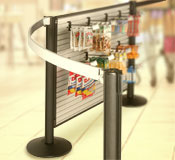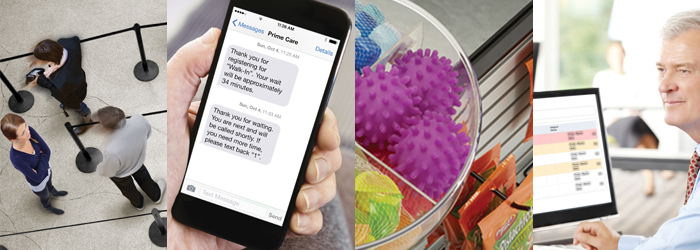The answer: waiting time. According to Paco Underhill, author of Why We Buy, “the most important factor in terms of a shopper’s opinion of service is waiting time – either at checkout, or in being acknowledged when they need help.” When customers wait briefly in a queue, they feel their time was well spent and they were treated capably. If they are forced to wait longer than they feel is fair or necessary, customers will perceive their entire experience as poor and the service as inept. So how can you find that happy medium?
The Art of Bending Time

“Bending” wait time is an art that all retailers and designers of retail queues must master. There is a great difference between real and perceived wait times – but it’s crucial that a retailer be worried about and aware of both. If a shopper has waited under two minutes, they’re usually still calm and rational about how long they’ve been in a queue. When forced to wait for more than two minutes, a person’s honest belief of how long they’ve actually waited may be exaggerated – and that’s when a brief stint in line that’s just part of the shopping experience becomes a full-fledged operation of its own that feels like a waste of a person’s time and energy. Relieving shopper anxiety can bend a person’s perception of how long they’re waiting. This relief can be supplied through simple acknowledgment – a service agent saying hello, or a manager mingling in line making small talk or helping the customer get a portion of their transaction ready for a speedier checkout. Many businesses are using digital signage to notify patrons of how long their approximate wait will be. Knowing that there is a finite amount of time they’ll be expected to wait can truly calm an anxious customer.
Waiting: Perception and Reality
“The checkout area needs to be slick. People are turned off by queues or chaos at the checkout,” explains Underhill. This is the reason that many people, whenever possible, choose drive-thrus over standing in a line. They’re at least distracted by the radio in their car, the air conditioning, and they have something to concentrate on – operating the car – rather than only focusing on how long they’re waiting. This need for fairness and distraction (however conscious or unconscious) is also why the single-line queue reigns supreme and creates the greatest amount of customer satisfaction. It’s a guaranteed way to serve shoppers in the order in which they arrived, dismissing the stress they may feel at choosing the “wrong” line. This being said, when offered the choice between three queues of five customers each or one longer line of 15 customers, people would almost always choose the multi-line queues – a clear example of the difference between perception and reality.

Catering to All Shoppers
There is such a thing as good chaos, organized chaos. You can go as low-tech as in-line merchandising or as high-tech as digital signage to divert waiting customers. The ultimate answer to the right diversion is that just about anything will do – the important thing is finding a way to keep your customers from focusing on the fact that they’re waiting. If you keep them happy while they’re waiting, their satisfaction with your store experience will soar. Underhill’s observations reinforce what we already know about the psychology of waiting lines – that it’s important to get people started, keep them busy, offer distractions, and so forth. Need a crash course in improving your queue? Talk with a Lavi rep today.












